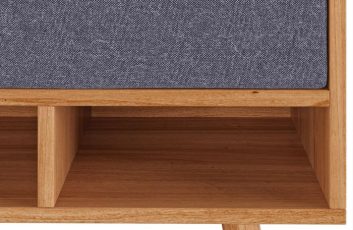The history of Mazda X5 model development
The history of Mazda X5 model development – The Mazda X5 platform, while not a model name itself, represents a significant chapter in Mazda’s history. It’s the underlying architecture that underpins several generations of popular Mazda vehicles, shaping their driving dynamics and design language. Understanding its development is key to appreciating the evolution of Mazda’s engineering prowess and design philosophy. This article delves into the detailed history of the Mazda X5 platform, exploring its key features, the models it supported, and its lasting impact on the automotive industry.
The Genesis of the X5: Laying the Foundation (Early 2000s)
The seeds of the X5 platform were sown in the early 2000s as Mazda sought to create a more versatile and efficient vehicle architecture. Previous platforms were showing their age, and Mazda recognized the need for a modern foundation that could support a range of body styles and powertrains while adhering to increasingly stringent fuel economy and safety regulations.

Source: mazdastories.com
Understanding the history of Mazda X5 model development requires examining Mazda’s broader design philosophy. This evolution is particularly interesting when compared to competitors like Volkswagen. For a detailed look at a current comparison, check out this review of the 2025 models: Mazda 3 vs Volkswagen Golf reviews 2025. Returning to the X5, its development reflects Mazda’s commitment to innovative engineering and stylish design, a legacy visible in subsequent models.
The emphasis was on a lightweight yet robust design, aiming for improved handling and fuel efficiency without compromising passenger safety. This focus on efficiency and driving dynamics would become a hallmark of the X5 and subsequent Mazda platforms.

Source: dreamstime.com
Key Design Principles of the X5 Platform:
- Lightweight Construction: Extensive use of high-strength steel and aluminum alloys helped reduce overall vehicle weight, contributing to improved fuel economy and handling.
- Enhanced Stiffness: A rigid chassis structure was crucial for providing a stable platform, improving handling precision and reducing noise, vibration, and harshness (NVH).
- Versatile Design: The platform was designed to accommodate various body styles, including sedans, hatchbacks, and SUVs, maximizing economies of scale.
- Improved Safety Features: The platform incorporated features designed to meet and exceed contemporary safety standards, including advanced crumple zones and reinforced passenger compartments.
Mazda3 (Axela) and Mazda6 (Atenza): The First X5 Generation Vehicles
The Mazda3 (known as the Axela in some markets) and Mazda6 (Atenza) were among the first models to utilize the X5 platform. Launched in 2003 and 2002 respectively, these vehicles showcased the platform’s potential. The Mazda3, a compact car, benefited from its nimble handling and fuel efficiency, while the Mazda6, a mid-size sedan, demonstrated the platform’s ability to support a larger, more luxurious vehicle.
Both models received positive reviews for their driving dynamics and refined interiors, establishing the X5 platform as a strong contender in the competitive automotive market.
Impact of the First Generation X5:
- Improved Brand Image: The success of the Mazda3 and Mazda6 helped elevate Mazda’s image, demonstrating its commitment to producing high-quality, driver-focused vehicles.
- Technological Advancements: The platform incorporated several technological advancements, including improved suspension systems and more refined powertrains.
- Global Expansion: The X5 platform’s versatility allowed Mazda to expand its global reach, adapting the platform to suit the needs of various markets.
Evolution and Refinement: Subsequent Generations of the X5 Platform
The X5 platform wasn’t static; it underwent several iterations and refinements over the years. Subsequent generations incorporated further improvements in terms of safety, fuel efficiency, and driving dynamics. These improvements reflected advancements in materials science, engineering techniques, and consumer expectations.
Key Improvements in Later Generations:, The history of Mazda X5 model development
- Increased Use of Lighter Materials: Later iterations saw an increased use of high-strength steel and aluminum alloys, further reducing vehicle weight.
- Advanced Safety Technologies: The platform incorporated advanced safety features such as lane departure warning, adaptive cruise control, and automatic emergency braking.
- Improved Powertrain Efficiency: The platform was adapted to accommodate more fuel-efficient engines, including SKYACTIV technology, which significantly improved fuel economy.
- Enhanced Refinement: Noise, vibration, and harshness (NVH) levels were further reduced, resulting in a more comfortable and refined driving experience.
The Legacy of the X5 Platform
While Mazda has moved on to newer platforms, the X5 platform’s influence remains significant. It laid the groundwork for many of the design and engineering principles that continue to define Mazda vehicles today. The emphasis on lightweight construction, precise handling, and fuel efficiency has become integral to Mazda’s brand identity. The X5 platform represents a pivotal moment in Mazda’s history, showcasing its commitment to innovation and its ability to compete effectively in the global automotive market.
Frequently Asked Questions (FAQ)
- Q: What Mazda models used the X5 platform? A: The Mazda3 (Axela), Mazda6 (Atenza), and several other models across different generations utilized variations of the X5 platform.
- Q: What are the key features of the X5 platform? A: Key features include lightweight construction, enhanced stiffness, versatile design, and improved safety features.
- Q: How did the X5 platform contribute to Mazda’s success? A: The X5 platform helped improve Mazda’s brand image, enabled technological advancements, and facilitated global expansion.
- Q: What are the differences between the various generations of the X5 platform? A: Subsequent generations saw improvements in lighter materials, advanced safety technologies, enhanced powertrain efficiency, and overall refinement.
- Q: Is the X5 platform still in use? A: No, Mazda has since moved on to newer platforms, but the X5’s influence is still evident in current Mazda designs.
Conclusion: The History Of Mazda X5 Model Development
The Mazda X5 platform represents a significant milestone in Mazda’s history, showcasing the company’s commitment to engineering excellence and innovative design. Its influence can still be felt in Mazda’s current model lineup, highlighting its lasting impact on the automotive landscape. Understanding the X5 platform’s development provides valuable insight into the evolution of Mazda’s engineering and design philosophy.
Call to Action (CTA)
Want to learn more about Mazda’s innovative engineering and design? Explore our other articles on Mazda’s technological advancements and model history!
Commonly Asked Questions
What engine types might a hypothetical Mazda X5 utilize?
Considering Mazda’s focus on fuel efficiency and performance, a hypothetical Mazda X5 could feature a range of engine options, including a refined gasoline engine, a powerful hybrid system, or even a fully electric powertrain, depending on the target market and technological advancements at the time of its hypothetical release.
What safety features would likely be included in a Mazda X5?
A Mazda X5 would likely incorporate advanced driver-assistance systems (ADAS) such as adaptive cruise control, lane-keeping assist, automatic emergency braking, and blind-spot monitoring. Furthermore, robust structural design and multiple airbags would be standard to ensure passenger safety.

Source: graphiccarsevolution.com
What design elements might differentiate a Mazda X5 from other Mazda models?
The design would likely incorporate Mazda’s signature Kodo design language, but with potentially more aggressive styling cues to reflect its hypothetical positioning within the Mazda lineup. This could include unique front and rear fascias, distinct wheel designs, and a more spacious interior layout.






